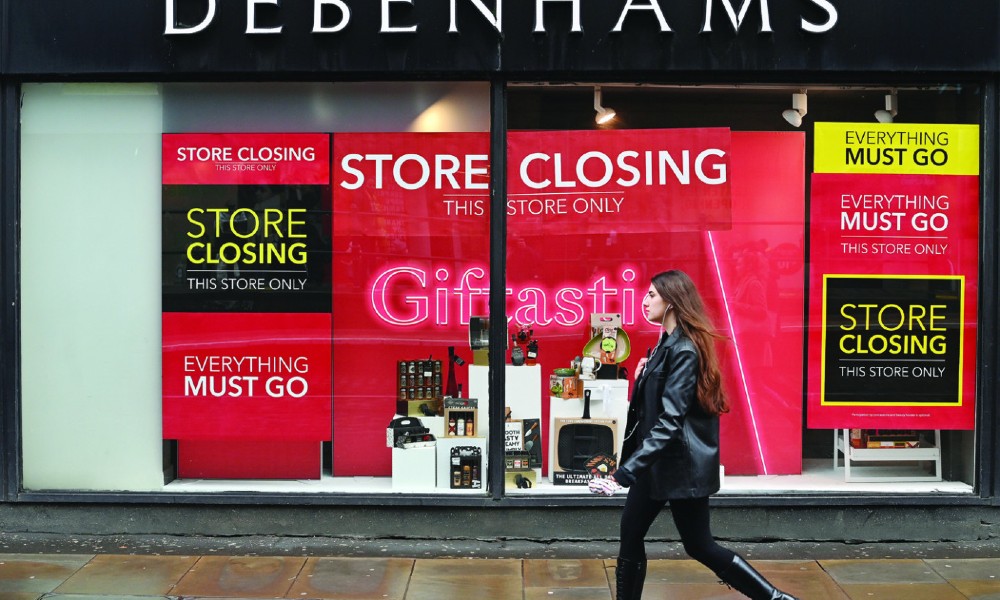Senior architect Jonathan Jones discusses some of the design opportunities and challenges with repurposing redundant shopping spaces – essential for bringing vibrancy back to our town centres.
Everyone is familiar with the story. Whether it’s high streets, shopping centres or department stores, there’s a lot of redundant space. This overprovision of retail is out of step with our current needs and habits.
According to the Local Data Company (LDC), ‘Vacancy rates serve as an essential barometer for retail health… Retail vacancy rates remain at a record high, but this figure looks set to decline as more units are taken off the market for repurposing.’ (1)
How has this come about?
Online shopping is convenient and low-cost. It is drawing physical retail away from the high street, and people’s habits are changing – particularly the younger demographic. People are also moving out of town centres and using them less, in part due to poor planning decisions.
Tenants are approaching an EPC cliff edge. ‘Energy performance certificates (EPC) regulations are urgently bringing into focus the need to improve the energy efficiency of all commercial buildings. A staggering 83% of retail stock nationally will need to be improved by 2030.’ (2)
The overhead cost of maintaining physical retail spaces simply prices some retailers out of the shop front.
Traditional retail spaces can lack reactivity. A physical store can’t compete with online environments in this sense and can quickly stagnate without reinvention and investment.
Our retail sites
When considering an opportunity, one of the first things to consider is the site. How well or how poorly has the building responded to its context? One of the biggest failings of retail developments is the ‘spaceship landing’ effect, ignoring local context, historic streets and the scale of city blocks, for example. After hours, can people navigate through it or do they have to go around? And how safe does that feel?
It is worth recognising that we have a range of types of shopping space across the UK and each comes with a unique set of characteristics.
We have a huge number of post-war modernist shopping precincts that have evolved over time, taking influence from the North American retail malls – enclosed, air-conditioned, fairly sterile environments. These are car-oriented models, with surrounding surface car parks, focused on how you drive there rather than how you access as a pedestrian or via public transport.
When you take these models and try and shoehorn them into a town centre, the layout and building diagram can become compromised. It’s a lot harder as a pedestrian to understand how you might get from A to B and the area becomes impermeable. These inward-looking spaces have to have a servicing or back-of-house element which can lead to service corridors and blank facades that create a very unwelcoming environment with poor surveillance – undesirable spaces that make people feel unsafe.
This formulaic inward-looking approach, with multiple brands, has led to what some people call ‘clone town syndrome’ – if you were to drop into one of these places, it would be hard to tell if you were two miles down the road, or 100 miles away.
There is obviously an opportunity to open these spaces up and create a meaningful connection to what is happening beyond. To create a sense of place.
Contemporary department stores can similarly feel out of place, a big box with no windows, taking up a sizeable chunk of our high streets. More traditional department stores often have significant heritage and prominence. So, there can be amazing character and dramatic interiors, but there are design challenges when it comes to manipulating or retrofitting this type of space. For example, large floor-to-floor heights, requirements for means of escape, and trying to retrofit contemporary regulations and standards such as limiting operational carbon or fabric fire protection.
The challenge for landlords
Landlords need to be proactive or face the daunting prospect of becoming irrelevant. Rather than be pessimistic, there’s an opportunity to react quickly and reposition. We work with clients to explore alternative solutions.
What potential schemes could work within their sites and the assets that they have?

